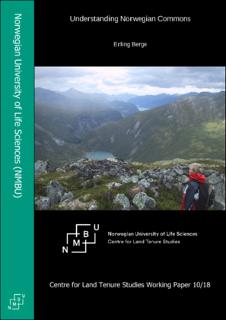Resource information
The paper reviews the development of the legal status of Norwegian commons from the first known legislation on commons. The development can be divided into 5 periods.
The first period lasted until about 1300. In this period, the commons changed from being a local matter for the chiefs and the local thing to become a national resource where also the King had rights to resources for defence of the realm.
The second period is the big population decline 1350-1550 where Norway lost 60% of its population and the King and his bureaucracy moved to Copenhagen. The commons reverted to a local issue.
The third period lasted from about 1550 to 1814. The powers of ownership were now seen to reside in the Crown. It had moved from the local community to the state. The rights of common were respected and should remain as they had been from old on. Limitations on the commoner's exploitation were introduced. Rights of common were held by active farms and stinted to the needs of the farm. At the same time, the Crown started large-scale exploitation of the forest resources and selling off forestland to sawmill owners and timber merchants.
In the period 1814 to 1857/ 1863 the state’s ideas about the commons were recast into 3 types of commons and one type not mentioned in the legal texts that here is called hamlet commons.
In the period after 1863 the limitations and regulations of the exploitation of the commons continued. By the end of the 20th century, the rights of common were reduced to rights of forests and pasture tailored to the needs of the farm. However, the development in farming and recreation activities of the population changed the usage of the commons. The rights of fishing and hunting in state commons came close to an all men’s right. The national community expanded its use of the commons by defining much of their areas to be protected lands providing landscapes for recreational activities and production of ecosystem services.


